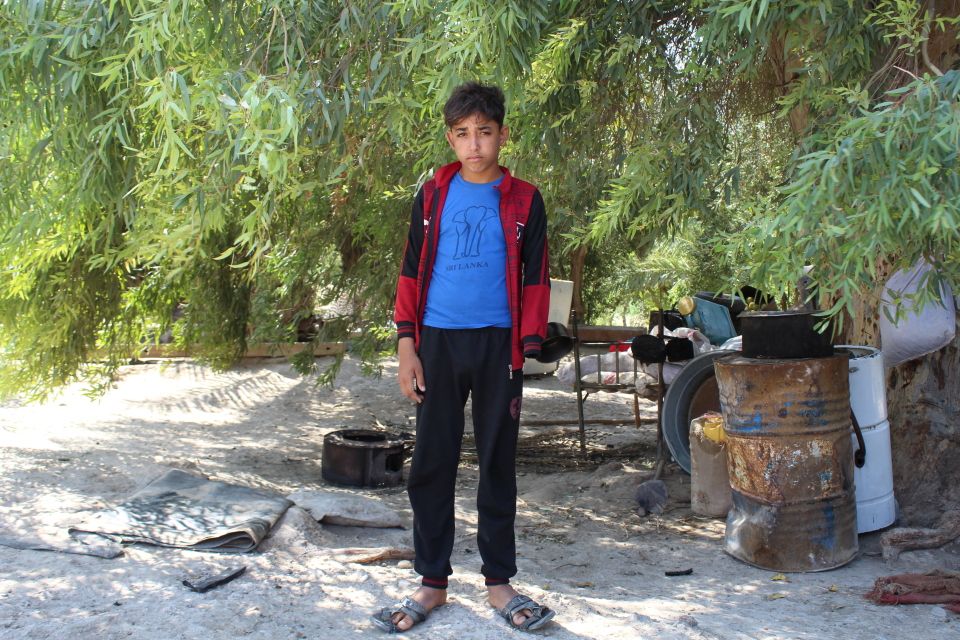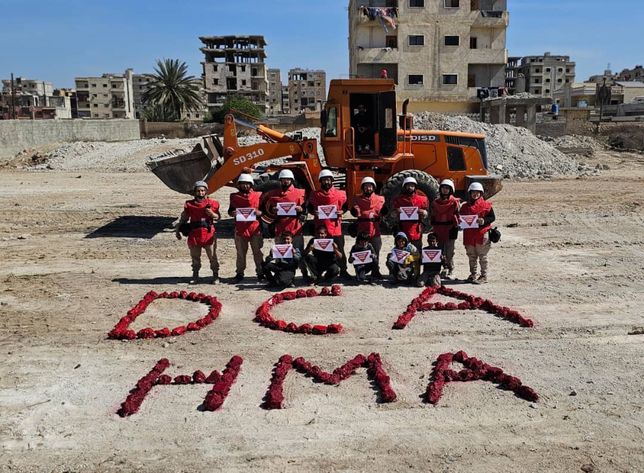In the rural village of Zalabya, Deir-ez-Zor, high levels of contamination have led to tragic incidents, claiming lives and causing serious injuries among community members. Among the affected is Khaleel, a 14-year-old boy whose life was forever changed by a single moment of misfortune.
Khaleel was herding sheep in March 2024 when he saw an unexploded ordnance (UXO). Not knowing what this object was nor the danger it represented, he and other children began playing with it leading to a sudden explosion that wounded Khaleel and several other children with shrapnel. The explosion left Khaleel with permanent life changing injuries, including the loss of his hand, and with the financial challenges his family face, most of the shrapnel is still in Khaleel’s body.
His mother, Samra, says that “Khaleel hasn’t been able to cope since the incident. It was a shock to all of us, but especially to him. We could not afford removing the shrapnel from his body as we cannot meet our daily needs, and medical expenses are luxury to us.”
Unexploded bombs still pose danger
In 2024 the level of contaminated areas waiting for technical or clearance interventions remains dramatic. According to the survey results and combined with additional information management system for Mine Action (IMSMA) based data, a staggering 749 hazardous areas, totalling 38,012,478.08m² and 570 Explosive Ordnance spots (single items) continue to pose immediate threats to civilians in North-East Syria (NES). And this figure does not include new contamination in areas throughout NES where conflict continues unabated.
In Deir-ez-Zor, after years of ongoing conflict, unexploded ordnance (UXO) contaminate the city and its surrounding areas, posing deadly threats to the community. These Explosive Remnants of War (ERW) kill or injure civilians daily, often turning daily routines into life-threatening risks. The explosive ordnance contamination survey (April 2024) conducted in Northeast Syria (NES) found a high impact in areas where armed fighting has been ongoing the longest.
Before Khaleel’s accident, very few community members were aware of the dangers posed by unexploded bombs and munition in the area. Now, the neighbourhood is living in fear of the threat, with parents warning their children to avoid unidentified objects. Although this is helpful, it is no replacement for meaningful support or risk education on UXO. The fear and uncertainty that followed the incident have left the entire community in a state of anxiety – and has deepened the community’s plight.
When asked about his needs, Khaleel simply responded “first a hand”, and continued:
“I also ask for this area to be cleared of UXO because there are many of them, and I don’t want what happened to me to happen to other children,” he says.

For Khaleel and his family, the path forward is uncertain, and each day is a struggle against the lasting impact of his injuries. Khaleel’s story underscores the critical and ongoing threat posed by UXO in Deir-ez-Zor, the need for upscaling clearance and risk education efforts and the importance of support for families dealing with the aftermath of such tragedies. Families like Khaleel’s face the emotional and physical toll of such incidents but are also burdened with financial strain as they seek medical care and rehabilitation.
The broader community is also affected and is living in fear. Many areas across Northeast Syria are still heavily contaminated by Explosive Ordnance. It is crucial to safeguarding lives, preventing further tragedies, and fostering a safer, more secure future for all that the removal of explosive threats at a large scale continues.
Humanitarian Mine Action
Since 2017 DCA has been surveying contaminated areas and provided clearance of explosive hazards with the goal of saving lives. The Humanitarian Mine Action team delivers risk education to at risk communities in areas contaminated by unexploded ordinance (UXO) and other Explosive Remnants of War (ERW).


